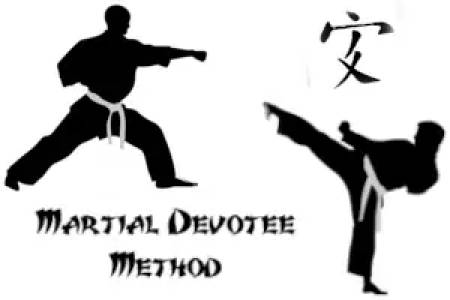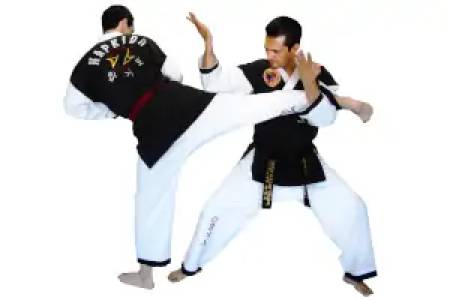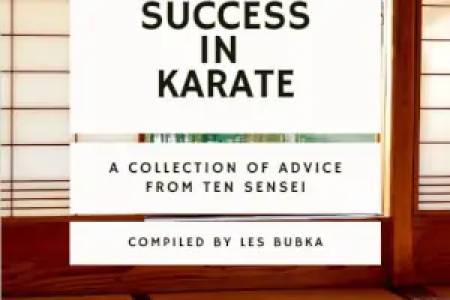Ninjutsu, also known as Ninpō, Shinobi-jutsu, is a holistic discipline that is centred around the practice of guerrilla warfare and espionage. Ninjutsu practitioners or Shinobi utilise a diverse range of techniques which include, striking, grappling and weaponry. The Martial Arts syllabus of Ninjutsu is only a single component of the wider body of knowledge studied within the discipline. The chief aim of a Shinobi is to become a completely natural being that is capable of effectively utilising their environment and their skills to achieve their goal.

Disclosure: Some of the links below are affiliate links and at no additional cost to you, I’ll earn a commission. Know that I only recommend products and services I’ve personally used and stand behind. When you use one of my affiliate links, the company compensates me, which helps me run this blog and keep my Martial Arts content free of charge for my readers (like you).
Brief History
Ninjutsu comprised of over 25 ryuha or styles and among them the most prominent were Iga Ryu and Koga Ryu. Many branches of Ninjutsu styles followed from Iga Ryu and Koga Ryu including Koyo Ryu, Ninku Ryu and Kishu Ryu. These descendent styles were simplistic in comparison to the two main styles of Ninjutsu but were still widely used by the Yamabushi (mountain warriors).
If one was to closely examine the styles of Iga Ryu and Koga Ryu, one would find only subtle differences between them. Iga Ryu and Koga Ryu are the same style and are of perfect similarity. So similar, that there are minimal differences even in their respective Kanji characters.
Iga Ryu and Koga Ryu are documented in the Bansenshukai (Shinobi “bible”). The Koga Ryu edition was authored by Koyo Onshi Fujibayashi Sabuji Yasutake while the Iga Ryu edition was authored by Inyo Onshi Fujibayashi Sabuji Yasutake who is essentially the same person. The only difference is the “nickname” chosen by the author across the two editions.
Koga Ryu is referred to as Koga Goju Sanke (53 Koga Families) and Iga Ryu is referred to as Iga Yonjuku Ryu (49 Iga styles). Each individual ninja within these 2 styles lived at a different location and under a different administration, yet they spoke the same language and performed the same function.
Prior to the large mountainous area being split into Iga and Koga provinces due to temple and aristocracy territorial land disputes, the Ninjutsu styles were seemingly unified. This is discernible through two notable points in Koga history:
- En no Gyoja, who was the founder of Shugendo, commissioned a training centre in Handozan which was located in the middle of the Koga district.
- The Koga district was originally not differentiated from the Iga district as it existed within the greater Iga area. The inhabitants of Iga and Koga were thus the same group of people.
The first Shugendo was located in Yoshino. This was followed by the Shugendo in Handozan and thereafter Heizan. Until the establishment of the 49 Temples of Shingon Shugendo in Iga, Handozan was the only Shugendo and it was located in the northern part of Iga. Influential people who mainly comprised of Hattori blood relatives trained in the art of Ninjutsu, Bujutsu and Heigaku at Handozan. Members of the Hattori family lived in both Iga and Koga areas, and this created a strong bond between the people of these two regions.
The Handozan Shugendo known as the seed of Ninjutsu, was the dojo credited with transmitting the founding Yamabushi Heiho to Iga.
After the split, the Koga Ryu served the governing aristocracy to maintain their position while maintaining close contact with the free land of Iga. The distinction between Iga Ryu and Koga Ryu first appeared during the Sengoku period (1467 – 1576 AD). The infamous battle that occurred between Iga and Koga Shinobi was called “Magari no Jin”, and it was at this point in history where the Iga and Koga was viewed as completely separate from one another.
Aspects
- Freerunning – a method of traversing different types of terrain with speed, agility and stealth by manoeuvring passed obstacles. Manoeuvres included flipping, jumping, gliding, and spinning.
- Disguise – effectively disguising oneself to infiltrate enemy camps and avoid detection
- Escape
- Concealment or non-detection
- Martial Arts
- Medicine – advanced knowledge of medicine to heal wounds from battle and stave of illness
The true objective of a Shinobi is to unify the body and Spirit so as to become a completely natural being. This is achieved by means of intense physical training, introspection of the mind and Buddhist religious practices. These serve to peel back the layers of the mind and eradicate the Ego to uncover the true essence of oneself and Spirit.
On becoming a completely natural being the Shinobi is capable of dealing with challenges spontaneously without the need for predetermined patterns. The Ninjutsu practitioner, in this state, has reached a Spiritual attitude that is versatile and indifferent to the specifics of a given situation

The Martial Art in Practice
Martial Arts in Ninjutsu are diverse and consist of a wide variety of practical fighting methods which place equal importance on striking, grappling and weaponry.
Martial Art applications in Ninjutsu emphasise natural and efficient movements which are prioritised over form and etiquette. A Ninjutsu practitioner strives for complete naturalness where no offensive or defensive movement is predetermined or committed based on emotion. The goal of the practitioner is to simply react in the most appropriate and applicable way possible to survive and overcome one or more opponents.
Power generation in Ninjutsu is very unique and based upon the principle of ki generation and body unity. The idea is that brute force or power generation from the hips, shoulders or any other physical part of the body is unnecessary if the body moves naturally as a singular unit. This is advantageous as one ages as one cannot maintain the same level of physical prowess as in youth. In Ninjutsu, force is applied to an enemy by the body as a whole as it moves with complete fluidity.
A Shinobi is to always occupy a neutral position and embrace the duality of all nature. In Martial Arts this could be the guard that the Shinobi occupies which is completely protected yet completely open at all times. He or she should be devoid of all emotion or thought during a combative altercation so as not to give away his or her intention. These is advantageous to the Shinobi in the following ways:
- In terms of combat posture, the Shinobi appears open so as to lure the opponent into an attack where the Shinobi can take advantage of the opponents temporarily vulnerable position.
- In terms of an unemotional mental state, the opponent is unable to discern intent, aggression or fear and thus lacks the information required to successfully carry out an attack.
Concepts
Ninjutsu is composed of eight fundamental disciplines, titled Ninja no hachimon, as documented by Dr Kacem Zoughari in his book, The Ninja – The Secret History of Ninjutsu:
- Ninja no kiai – Practical Synthesis of breathing and energy
- Koppō Tai-jūtsu – Techniques for bare-handed combat based on the laws which govern the human skeleton and framework
- Ninpo no ken – Sword-fighting techniques
- Yari-jutsu – Spear Techniques
- Shuriken – Techniques for the throwing and handling of sharp blades and objects
- Ka-jutsu – Techniques for using fire in all its forms: setting fires to using explosives
- Yugei – Cultural Pursuits: music, painting, dance, etc…
- Kyomon – Religious Practice
The eight fundamental disciplines are expanded upon in other schools of Ninjutsu such as Togakure-ryu ninpo which is titled happo biken – The eight secret rules of the sword:
- Gun-Ryaku – Military Strategy
- Tenmom – Meteorology and astronomy
- Chimon – Geography, geometry, distances and angles
- Shuriken-jutsu – Techniques for throwing edged weapons
- Senban-nage-jutsu – Technique for throwing four-pointed metal discs
- Tonpo – Methods of Escape
- Jo-jutsu – Technique for using the 4-foot staff
- Hanbo-jutsu – Technique for using the 1-meter stick
- Bisento-jutsu – Technique for using the battlefield halberd
- Naginata-jutsu – Technique for using the ordinary halberd
- Rokushaku-bo-jutsu – Technique for using the 6-foot staff
- So-jutsu – Technique for using the spear
- Kisha-jutsu – Horsemanship, including mounted combat, shooting with the bow while on horseback, etc…

Weaponry
- Naginatajutsu – Japanese spear called hoko yari which resembles a halberd or glaive
- Kenjutsu – Japanese swordmanship
- Bōjutsu – Staff or long stick techniques
- Shurikenjutsu – concealed blade and blade throwing techniques
- Sōjutsu – Spear techniques
- Jittejutsu – techniques involving the use of a baton
Travel for Martial Arts
Is there any way we can improve upon the details of this martial art? Please Contact Us to let us know
More on Martial Arts

The Martial Devotee Method
Thursday, 07 October 2021 17:07I have been preparing for some really tough Martial Arts tests recently. I have been training extremely hard and wanted to share one of my training methods with you to become more proficient at a...

Hapkido
Saturday, 04 December 2021 10:45Hapkido is a hybrid Martial Art that is characterised by its diverse set of techniques and circular movements. The Martial Art focuses on both long-range and close-range fighting techniques and its...

Rules for Success in Karate
Friday, 08 October 2021 18:47I came across an awesome project that was initiated by Les Bubka , an amazing Sensei that seeks to tackle mental health issues and promotes overall well-being through the practice of his Martial Art...
